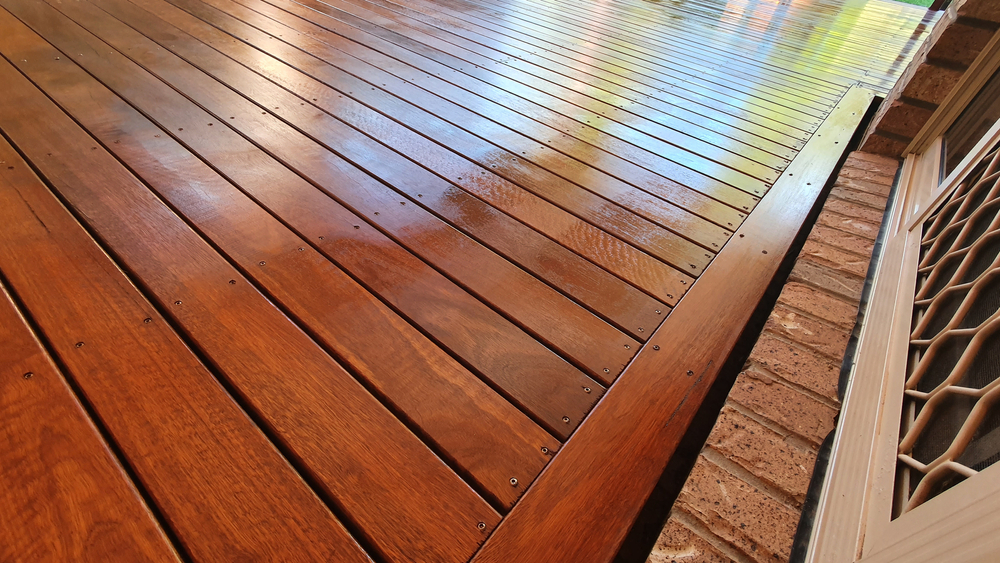The science of stains: Understanding how wood absorbs colour
Wood is one of the most useful and beloved materials in existence today. From building homes and other structures, to creating furniture and flooring, wood has innumerable uses. When it comes to changing the appearance of wooden surfaces, staining is an excellent option for long lasting results. Deciding on a stain, however, is much easier when you have an understanding of how wood absorbs colour.
In the following post, we’ll explore the fascinating world of wood staining and delve into the science behind this transformative process.

What is the structure of wood?
To understand how wood absorbs colour, it’s important to consider the structure of wood at a microscopic level. Wood is composed of tiny, hollow cells called tracheids and vessels, which are responsible for transporting water and nutrients throughout the tree. These cells are surrounded by a matrix of lignin and cellulose.
Lignin, found in the cell walls, is particularly vital when it comes to staining. It acts as a natural adhesive, binding the cellulose fibers together while also giving wood its rigidity. However, lignin is not uniform in its distribution within the wood, which becomes relevant when applying stains.

How does wood absorb colour?
When you apply a wood stain, you are essentially introducing pigments or dyes into the wood’s surface. The stain’s molecules therefore penetrate the wood’s structure, primarily the cell walls.
In order to perform a successful wood staining, it’s helpful to understand how these molecules will interact with the wood. When considering a stain, please keep the following in mind:
- Pigment and Dye stains create different results: Stains can be classified into two categories – pigments and dyes. Pigment stains are composed of tiny solid particles that sit on the surface of the wood, whereas dye stains are made up of molecules that penetrate deeper into the wood’s structure. Pigment stains tend to change the wood’s colour more dramatically, while dye stains allow the wood’s natural grain to show through.If you’re looking for a pigment dye, try Sadolin Superdec Satin. This formula results in a highly durable opaque finish for exterior wood, masonry, weathered plastic, cladding & steel. What’s more, it erodes naturally by weathering, ensuring the coating remains flexible and resists cracking, peeling and flaking. If you want a quality dye stain, try our Sadolin Classic formulation. This all purpose woodstain absorbs deeply into the timber to provide exceptional protection against the elements for years and years to come.
- Lignin’s can impact the finish of your stain: Lignin is critical in the staining process because it acts as a binding agent for the stain molecules. As stains are applied, they bond with the lignin-rich areas, resulting in colour changes. The varying distribution of lignin in different wood species and sections of the tree leads to variations in how stains are absorbed, affecting the final appearance.
- Pore Size and Density will also play a role in the staining process: The size of your wood’s pores will also impact stain absorption. Woods with larger pores (like oak wood) will absorb more stain, leading to a darker colour. On the other hand, woods with smaller pores (like maple) will absorb less stain and appear lighter.
- Proper preparation of wooden surfaces is key: Never underestimate the power of prep. The preparation of the wood surface is crucial for stain absorption. Sanding the wood smooths the surface and removes any imperfections that could hinder the stain’s penetration. Properly prepared wood surfaces ensure more even absorbtion and therefore a better finish.

Staining wood is not just about choosing the right stain but also taking into account important factors such as the anatomy of wood, the different types of stains, and how the wood should be prepared. Once you understand the science behind these factors, the process of staining becomes much simpler and more rewarding. If you’re ready to begin your staining journey, or are looking for all of the products you need to keep your wood healthy and beautiful for years to come, call into your local Sadolin Stockist today!

